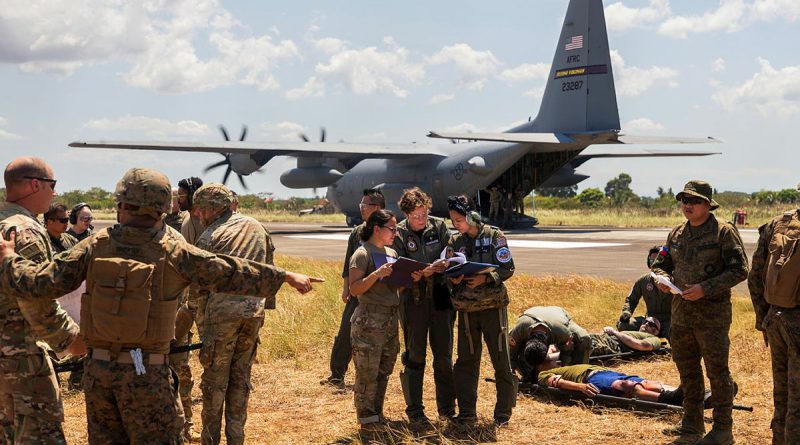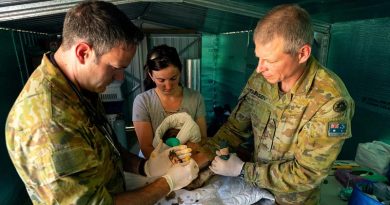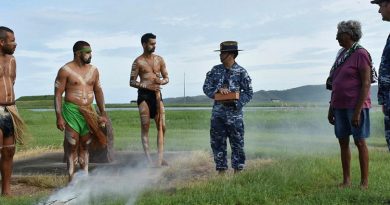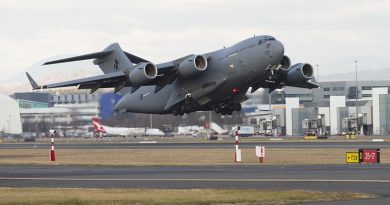Exercise Balikatan turns up the heat

An extreme heatwave added to the challenge for members of the ADF deployed to the Philippines for Exercise Balikatan 2024 from April to May.
CAPTION: Personnel from the Royal Australian Air Force, Pacific Air Forces and the Armed Forces of the Philippines assess casualties at the site of a simulated aeromedical evacuation during Exercise Balikatan, Philippines. Story by Flight Lieutenant Claire Burnet. Photos by Corporal Sam Price.
The 39th iteration of the largest annual bilateral exercise between the Philippines and the US was completed despite the unusually hot weather hovering over South-East Asia for its duration.
About 200 ADF personnel trained alongside 16,000 counterparts from the Armed Forces of the Philippines (AFP) and US forces, as well as French Navy personnel, who joined the exercise as active participants for the first time this year.
Commander of the Australian Contingent, United States Air Force exchange officer Lieutenant Colonel Matthew Diamond, said ‘balikatan’ translated as ‘shoulder to shoulder’ in the Filipino language of Tagalog.
“Exercise Balikatan provides the ability for allies and partners in the Pacific to work together, hand in hand, through combined joint all-domain operations in a contested environment,” Lieutenant Colonel Diamond said.
“By training together, multilateral forces build upon shared tactics, techniques and procedures to enhance readiness and response capabilities during real-world challenges.”
Australia’s contribution to the exercise comprised Army command and support personnel from various units; land forces from 1st Battalion, the Royal Australian Regiment (1RAR); RAAF engineering and support personnel from 65 Air Base Recovery Squadron; joint terminal attack controllers from 4 Squadron; an E-7A Wedgetail aircraft and crew from 2 Squadron; and, RAAF medics and flight nurses.
The ADF contingent conducted field training and live-fire exercises, flying serials, engineering tasks and airfield construction training, joint terminal attack controller functions and aeromedical evacuation exercises.
Commanding Officer 1RAR, Lieutenant Colonel Brent Hughes, said Exercise Balikatan was an opportunity to integrate a variety of Australia’s warfighting capabilities with Filipino and US allies.
“Our aircraft coordinated strike platforms in the sky while our soldiers undertook tough, warfighting-focused training in the jungle and in urban settings,” Lieutenant Colonel Hughes said.
Chief of Joint Operations Lieutenant General Greg Bilton said the exercise showcased the US and Philippines’ commitment to their bilateral partnership, as well as interoperability with other partner nations.
“The Philippines is one of our closest partners and friends and our defence relationship continues to deepen under our strategic partnership,” Lieutenant General Bilton said.
“Australia’s participation demonstrates our commitment to, and engagement with, the Indo-Pacific region.”
.
.

.
.





